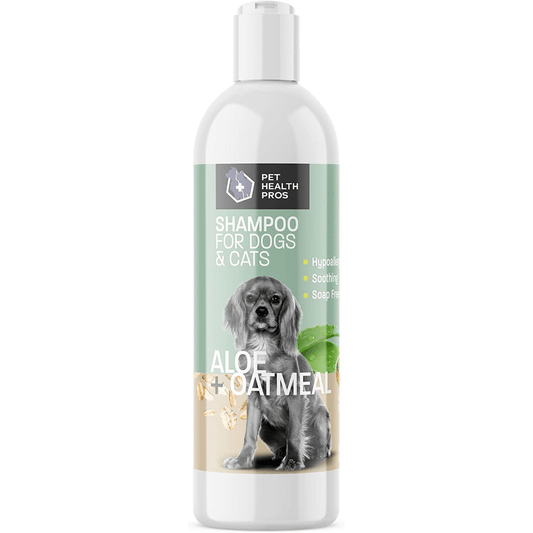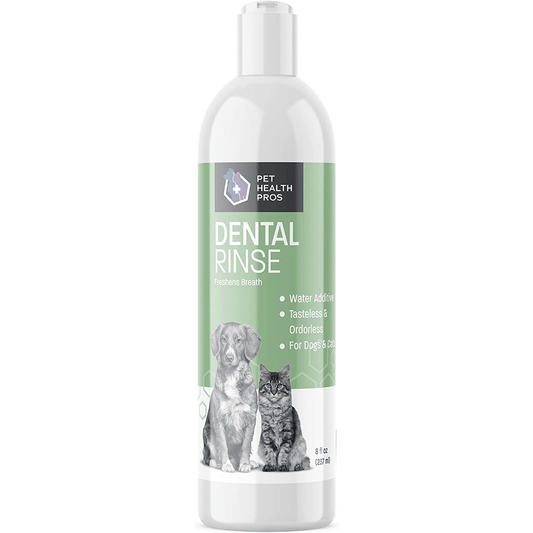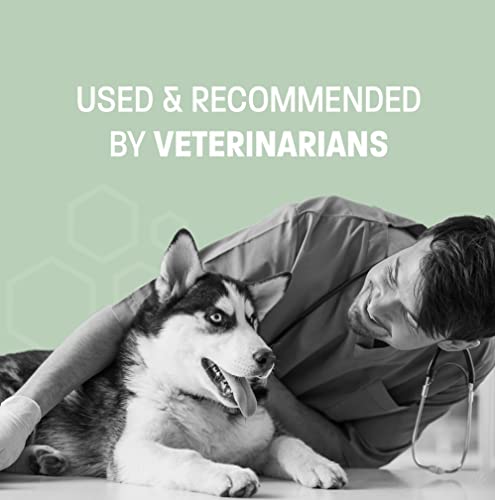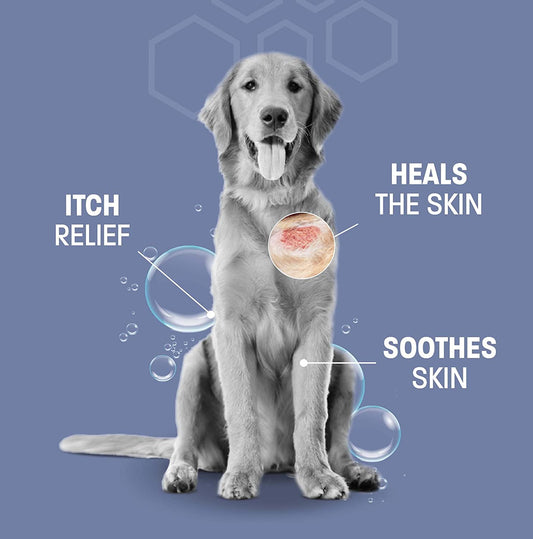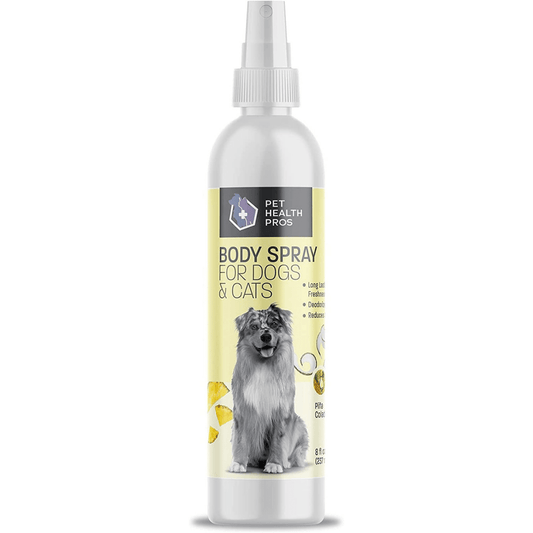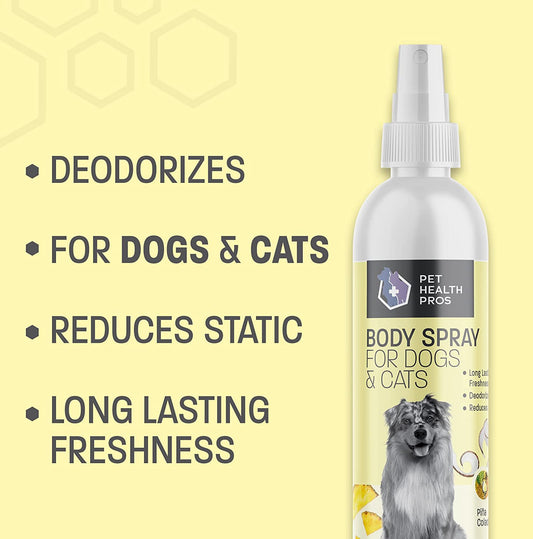Omega 3 fatty acids are essential for a dog's overall health and well-being. These nutrients play a vital role in various bodily functions and can help improve your dog's quality of life. From boosting skin and coat health to supporting joint function and cognitive abilities, Omega 3 is a powerful addition to your dog's diet. This guide will cover everything you need to know about the benefits of Omega 3 for dogs and how to incorporate it into their daily routine.
Key Takeaways
- Omega 3 fatty acids are crucial for your dog's health and can improve skin, coat, joints, and brain function.
- There are different types of Omega 3 fatty acids, and they can be found in natural food sources as well as supplements.
- It's important to choose the right Omega 3 supplement for your dog by considering factors like type, dosage, and quality.
- Watch for potential side effects or interactions with medications when adding Omega 3 to your dog's diet.
- Always consult your veterinarian before starting any new supplement to ensure it's safe and beneficial for your dog.
Understanding Omega 3 Fatty Acids
Types of Omega 3 Fatty Acids
Omega 3 fatty acids are essential fats that your dog's body can't make on its own. There are three main types: ALA (alpha-linolenic acid), EPA (eicosapentaenoic acid), and DHA (docosahexaenoic acid). Each type plays a unique role in your dog's health. ALA is mostly found in plant oils, while EPA and DHA are abundant in fish oils.
Sources of Omega 3 for Dogs
Dogs can get Omega 3 from various sources. Fish oil is one of the best sources, providing high levels of EPA and DHA. Flaxseed oil is another option, rich in ALA. Some dog foods are also fortified with Omega 3. Always check the label to ensure your dog is getting enough.
How Omega 3 Works in a Dog's Body
Omega 3 fatty acids help reduce inflammation, support brain function, and improve heart health. They are incorporated into cell membranes, making them more flexible and efficient. This helps in various bodily functions, from joint health to cognitive abilities.
Omega 3 fatty acids are vital for your dog's overall well-being. Including them in your dog's diet can lead to noticeable improvements in health and vitality.
Health Benefits of Omega 3 for Dogs
Improving Skin and Coat Health
Omega 3 fatty acids can make your dog's coat shiny and healthy. They help reduce itching and dryness, making your dog more comfortable. A bark above the rest: Omega 3 benefits for dogs include better skin and coat health.
Supporting Joint Health
Omega 3s are great for your dog's joints. They can help reduce inflammation and pain, making it easier for your dog to move around. This is especially helpful for older dogs or those with arthritis.
Boosting Cognitive Function
Omega 3 fatty acids can also help your dog's brain. They support better memory and learning, which is important for dogs of all ages. This can make your dog more alert and responsive.
Adding Omega 3 to your dog's diet can make a big difference in their overall health and happiness.
Choosing the Right Omega 3 Supplement for Your Dog
Factors to Consider
When picking an Omega 3 supplement for your dog, there are several factors to keep in mind. Quality is crucial; look for products that are free from contaminants and have been tested for purity. The source of the Omega 3 is also important. Fish oil, krill oil, and flaxseed oil are common sources, but each has its own benefits and drawbacks. Additionally, consider the form of the supplement—liquid, capsule, or chewable—and choose one that your dog will easily consume.
Types of Omega 3 Supplements
There are various types of Omega 3 supplements available for dogs. Fish oil is one of the most popular options, known for its high levels of EPA and DHA. Krill oil is another good choice, often praised for its antioxidant properties. Flaxseed oil, while rich in ALA, is less effective because dogs need to convert ALA to EPA and DHA. Each type has its own set of benefits, so it's essential to choose the one that best meets your dog's needs.
Dosage Recommendations
Determining the right dosage of Omega 3 for your dog can be tricky. It's generally based on your dog's weight and specific health needs. A common guideline is to provide about 20-55 mg of EPA and DHA combined per pound of body weight. However, it's always best to consult your veterinarian for personalized advice. Overdosing can lead to side effects, so it's crucial to stick to the recommended amounts.
When choosing an Omega 3 supplement, always prioritize quality and consult your vet to ensure you're making the best choice for your dog's health.
Potential Side Effects and Risks
Recognizing Overdose Symptoms
While Omega 3 fatty acids are beneficial, too much can cause problems. Overdosing on Omega 3 can lead to symptoms like diarrhea, vomiting, and a fishy odor. If you notice these signs, it’s important to reduce the dosage and consult your vet.
Interactions with Medications
Omega 3 supplements can interact with certain medications. For example, they can thin the blood, which might be an issue if your dog is on blood-thinning drugs. Always check with your vet before starting any new supplement.
Allergic Reactions
Some dogs might be allergic to fish-based Omega 3 supplements. Symptoms of an allergic reaction can include itching, swelling, and difficulty breathing. If you see any of these signs, stop the supplement and seek veterinary care immediately.
It's crucial to monitor your dog’s health when introducing any new supplement. Regular check-ups with your vet can help catch any potential issues early.
Incorporating Omega 3 into Your Dog's Diet
Natural Food Sources
One of the best ways to add Omega 3 to your dog's diet is through natural food sources. Flaxseed naturally contains omega-3 and omega-6 fatty acids, without the fishy smell of salmon or cod. Other good sources include fish like mackerel and sardines. These foods can be easily mixed into your dog's regular meals.
Supplementing with Omega 3
If natural foods aren't enough, you can use supplements. Omega 3 supplements come in various forms, such as oils and capsules. It's important to choose a high-quality product to ensure your dog gets the best benefits. Always follow the dosage instructions on the package.
Tips for Picky Eaters
Some dogs are picky eaters and might not like the taste of Omega 3-rich foods or supplements. To help, you can mix the supplement with their favorite food or use flavored options. Another trick is to start with a small amount and gradually increase it.
Tip: If your dog refuses to eat Omega 3-rich foods, try mixing them with a small amount of peanut butter or yogurt. This can make the food more appealing.
Consulting Your Veterinarian
When to Seek Professional Advice
It's crucial to consult your veterinarian before adding any new supplement to your dog's diet. Your vet can provide personalized advice based on your dog's specific needs and health conditions. This step is essential for debunking myths and highlighting benefits of omega 3 for dogs and cats.
Questions to Ask Your Vet
When you visit your vet, come prepared with questions. Here are some you might consider:
- What is the right dosage of Omega 3 for my dog?
- Are there any potential side effects I should watch for?
- How will Omega 3 interact with my dog's current medications?
- What are the best sources of Omega 3 for my dog?
Monitoring Your Dog's Health
After starting an Omega 3 supplement, keep an eye on your dog's health. Look for improvements in their skin, coat, and joint mobility. If you notice any adverse reactions, contact your vet immediately. Regular check-ups are important to ensure your dog is benefiting from the supplement and to make any necessary adjustments.
Omega 3 is important for overall health, skin, coat, joint mobility, and mental well-being emphasized. Consult vet for proper dosage.
When it comes to your pet's health, always talk to your vet. They can give you the best advice for your furry friend. For more tips and products to keep your pet happy and healthy, visit our website today!
Conclusion
In summary, Omega 3 fatty acids offer numerous health benefits for dogs, from improving their skin and coat to supporting heart health and reducing inflammation. Including Omega 3 in your dog's diet can lead to a happier and healthier life for your furry friend. Always consult with your veterinarian before making any changes to your dog's diet to ensure it meets their specific needs. By understanding and utilizing the benefits of Omega 3, you can help your dog live a longer, more comfortable life.
Frequently Asked Questions
What is Omega 3 and why is it important for dogs?
Omega 3 is a type of fat that is good for dogs. It helps keep their skin and coat healthy, supports their joints, and can even boost their brain power.
Can all dogs take Omega 3 supplements?
Most dogs can take Omega 3 supplements, but it's always best to ask your vet first. Some dogs might have special health needs or be on medications that could interact with the supplement.
What are some natural sources of Omega 3 for dogs?
Fish like salmon and sardines are rich in Omega 3. You can also find Omega 3 in flaxseed oil and chia seeds.
How do I know the right Omega 3 dosage for my dog?
The right dosage depends on your dog's size, age, and health. It's best to follow the advice of your vet or the instructions on the supplement package.
Are there any side effects of giving my dog Omega 3?
Some dogs might have an upset stomach or diarrhea when they first start taking Omega 3. If you notice any serious side effects, stop giving it to them and talk to your vet.
How long does it take to see the benefits of Omega 3 in my dog?
It can take a few weeks to a few months to see the benefits of Omega 3. Be patient and keep giving it to your dog as directed.


